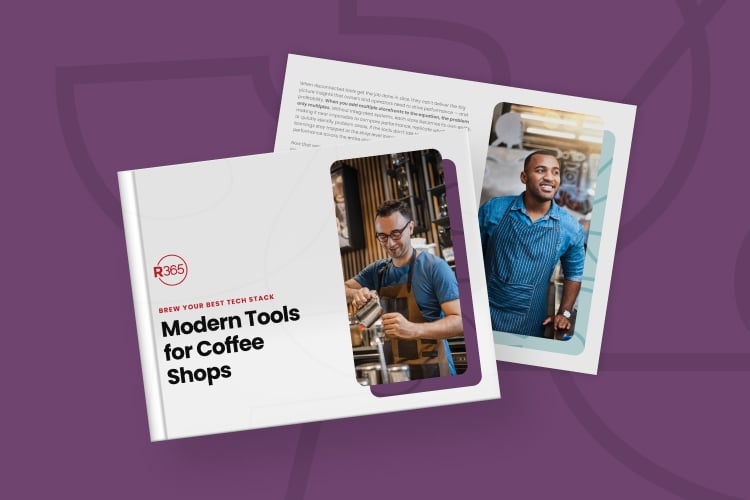By John Moody, Restaurant365 Chief Strategist & Co-Founder
The Restaurant Labor Shortage
The restaurant industry is back to busy, with full indoor capacity and a dining public eager to eat out. However, as all restaurant operators know, this uptick in business has come with staffing challenges.
The restaurant industry has historically grappled with a higher turnover rate than other industries, but the current restaurant staff shortage is nearly unprecedented. Some operators are even decreasing hours or closing locations due to a lack of restaurant staff.
For many, the current labor shortage centers around both restaurant hiring and employee retention difficulties. The shortage is especially acute for back-of-house employees, such as prep cooks, line cooks, and dishwashers.
How can you address the restaurant staff shortage? Drawing from industry insights and restaurant operators, here are four practical tips.
Always Be Hiring with an Eye on Retention
Whether you are short-staffed or not, hiring and retention should always be front of mind for your restaurant. “We always list evergreen positions,” said Talor Darling, director of human resources at Pluckers Wing Bar, based out of Austin, Texas. “Even when we’re theoretically fully staffed, we’re still hiring. It’s constant with us.”
These evergreen job openings can be listed on major job sites, niche career platforms, or even with recruiters (mostly used for salaried positions).
Other restaurant groups are focusing on making the process more streamlined for applicants. Kelly McCutcheon, vice president of training at Hopdoddy Burger Bar based out of Austin, Texas, described the group’s new experiment with easy restaurant hiring.
“We renovated our careers page and decided to make a 60-second interest survey,” she said. “We said, ‘Let us know, and then let us do the heavy lifting’.”
In one month, the company received 300 submissions. McCutcheon spoke about how the number of applicants helped boost morale among current restaurant staff, because they felt energized by seeing so many people interested in working with the company.
Once they had the interest from new hires, Hopdoddy could focus on growing restaurant employee retention. “We focus on retention as much, if not more than, recruiting,” added McCutcheon.
Provide Better Salary and Benefits than the Competition
Every restaurant seems to be currently hiring restaurant staff, which increases the competition for talent across the industry. Consider what other companies in your area are offering to ensure you are being competitive.
Standing out starts with competitive pay and benefits. Some restaurants are increasing wages to at least $15 per hour or experimenting with sharing tips between front of house and back of house to create more of a team environment.
In addition, investing in improving your tech stack for scheduling and labor costs can help you manage employee shifts to ensure they have enough opportunity to earn money, and give them flexibility when they need time off.
Attractive benefits can range from something simple like a generous leave of absence policy, offering Teledoc services, or all the way to something like Hopdoddy’s innovative fund to assist team members in financial crisis.
Employee retention is key, most operators agree. “You have to offer competitive pay, and benefits. These are trends that we’ve seen even pre-COVID — increasing those pay rates, and seeing what benefits we could offer our employees,” said Darling at Pluckers.
Darling also mentioned the importance of potentially leveraging both a sign on and retention bonus. You want to encourage new hires with a sign-on bonus, she said, but also for “the people who have been with us for a long time, we want to keep them there and keep them happy” with retention bonuses. Looking at the average tenure of your restaurant employees can help you decide the optimal period for delivering bonuses.
Attract Quality Employees with Creative Programs
There isn’t one single way to attract quality restaurant employees, so get creative in different markets. Some restaurants are experimenting with different bonuses, and others are using gifts or a free meal from the restaurant to encourage potential hires to show up to interviews.
If you’re trying to attract employees, one of the best resources you have is your current staff. For instance, McCutcheon spoke about leveraging a new 60-second commercial for one of the Hopdoddy locations. The ad is entirely in Spanish, featuring “Spanish-speaking team members talking about what they love about working at Hopdoddy,” she said. McCutcheon added that because 40% of their team in the market is Spanish speaking, this kind of custom ad can help reach out to that demographic and showcase the restaurant’s culture.
For other operators, traditional referral bonuses for current restaurant employees can also be impactful. Make sure you communicate to your staff that you are looking for other high-quality team members like them and include a referral bonus to add motivation. The bonus should be large enough to matter (no less than $250) and be paid out after a certain period (like once a new hire is onboarded, or after a period of a few months).
Create a Culture Where Employees Will Want to Work
To create a thriving restaurant culture, strong interpersonal relationships are critical. Especially given the changes due to the pandemic, it is key to show your employees that you are invested in creating a safe work environment and committed to protecting them.
In addition, when you offer great training and invest in your restaurant employees current and prospective staff notice. In a competitive labor field, make it clear if your restaurant is offering a career path, or prioritizes promoting from within.
McCutcheon at Hopdoddy spoke about their culture of career growth. “Seventy-five percent of our managers have been promoted from within, and 50 percent of them were team members at some point,” she said. “We preach that pipeline, cultivating ‘this isn’t just a job, it can be a career for you.’ It has helped attract and retain that kind of work culture,” she added.
Darling at Pluckers agreed, adding that culture is more important than ever right now. The company is really “emphasizing internal promotions right now.” It serves dual benefits, she explained. It’s necessary for staffing because the company needs more management, but “giving team members opportunities is a really important thing to do right now for morale, as well.”
It’s been a difficult time for the restaurant industry, and now the industry is facing an even greater restaurant hiring challenge. However, as these professionals and others have shown, strategic recruitment and a laser focus on employee retention can help you create a healthy culture and keep your restaurant fully staffed.


